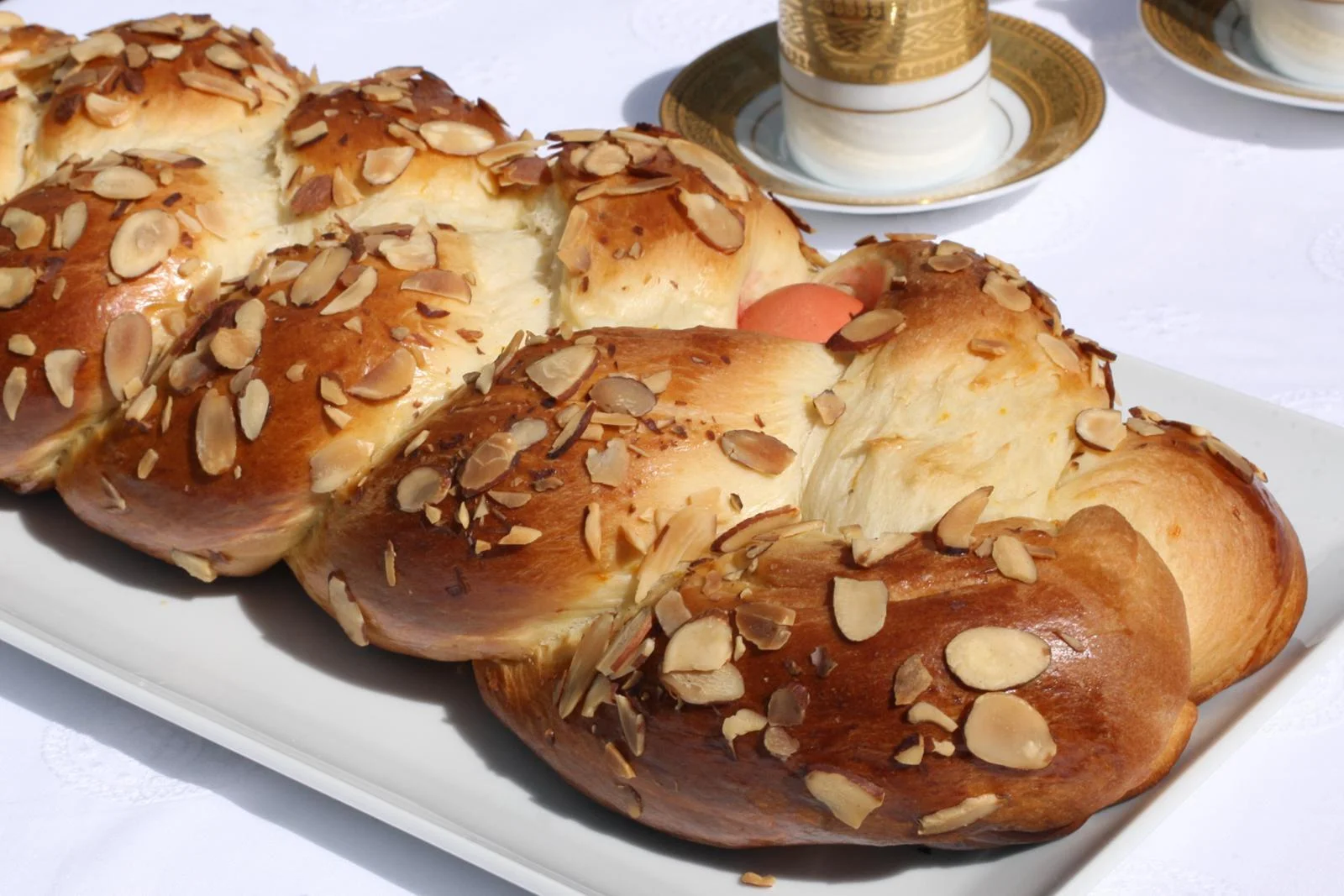Easter Bread (Tsoureki)
Tsoureki, a sweet yeast bread made of eggs, milk, and butter, is a staple during Greek Easter. The three-strand braid symbolizes the Holy Trinity, while the red-dyed hard-boiled egg braided into the dough symbolizes the blood of Christ. The bread is delicious and keeps for several days, but eat that double-cooked egg at your own risk.
What to buy: For a more authentically Greek Easter bread, season it with mahlepi and mastic. Mahlepi, also known as mahleb and mahlab, is the seed kernel found within the stone of the St. Lucie cherry. It is ground into a powder and used as a spice in Middle Eastern foods. It tastes similar to bitter almonds and tonka beans. Mastic is the sap of the mastic tree, which grows in Greece and across the Mediterranean. The sap is dried into a resin or gum, then ground and used as a spice. Mastic and mahlepi can be purchased at Greek grocers or online.
¾ cup plus 1 tablespoon whole milk
1 (¼-ounce) packet active dry yeast (2½ teaspoons)
4 cups all-purpose flour, plus more for dusting
2/3 cup granulated sugar
1 teaspoon fine salt
1 teaspoon ground mahlepi (optional)
¼ teaspoon pounded mastic crystals (optional)
8 tablespoons unsalted butter (1 stick)
2 large eggs
1½ teaspoons finely grated orange zest (from about 1 orange)
1 dyed hard boiled egg (optional)
1 large egg yolk
1/3 cup sliced almonds, toasted
1. In a small saucepan, heat 3/4 cup of the milk until warm to the touch but not hot (about 105°F to 115°F on an instant-read thermometer). Transfer the warm milk to a large bowl and sprinkle the yeast on top. Set aside for about 15 minutes to activate the yeast.
2. Sift the flour, sugar, salt, mahlepi (if using), and mastic (if using) together into a large bowl; set aside.
3. In a small saucepan, melt 7 tablespoons of the butter. Let the butter cool, then transfer to a medium bowl. Add the eggs and orange zest and beat together. Stir the egg mixture into the yeast mixture until combined.
4. Using a spoon, stir the flour mixture into the yeast-egg mixture until combined. Turn the dough onto a floured work surface and knead until smooth, flouring your hands and the surface as needed, about 10 minutes.
5. Coat a baking sheet and a 16-inch piece of plastic wrap with the remaining 1 tablespoon butter. Set the dough on the baking sheet and cover it with the plastic wrap, butter side down. Let rise in a warm place until doubled in size, about 2 hours.
6. Remove the plastic wrap and set it aside. Divide the dough into 3 equal pieces (about 12 ounces each). Roll the pieces into 1-1/4-by-16-1/2-inch ropes. Pinch all 3 pieces together on one end to secure, then braid the ropes, entwining the red hard-boiled egg (if using) into the bread. Pinch the other end of the ropes together to secure the braid. Set the braided dough on the prepared baking sheet, cover with the buttered plastic wrap (butter side down), and let rise in a warm place until doubled in size, about 1 hour. Meanwhile, heat the oven to 350°F and arrange a rack in the middle.
7. In a small bowl, beat together the egg yolk and remaining 1 tablespoon milk. With a pastry brush, evenly brush the egg mixture over the risen dough, then sprinkle the almonds over top, pressing the nuts gently into the dough. Bake until the bread is browned and the internal temperature reaches 190°F on an instant-read thermometer, about 30 minutes. Let cool before serving. Serves 10 to 12. –Jill Santopietro for CHOW.com.
